Bright green, dark green, olive, or spotted green eggs are seen in different bird species.
From small birds to large birds, green eggs come in different sizes from 1 inch to 6 inches, on average.
Some of the largest green eggs are laid by Cassowaries, a flightless species endemic to New Guinea.
Even more, many of the species that lay green eggs are known to take turns in incubation so that males take care of them as well.
In some cases, females prefer to mate with more males to increase breeding success while males of species that lay green eggs may not.
Some of the most common birds with green eggs may also be found in North America, especially as introduced species from around the world.
Here are 20 of the most common birds with green eggs commonly spotted around the world.
Table of Contents
1. Southern Cassowary
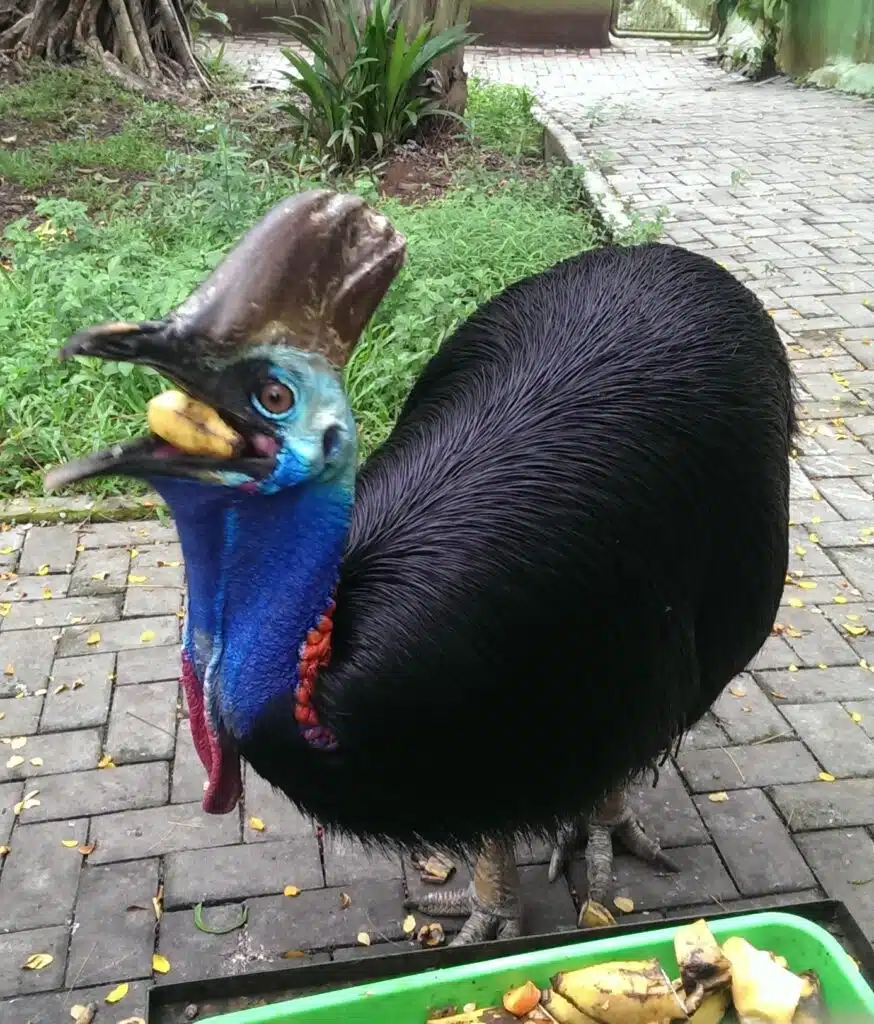
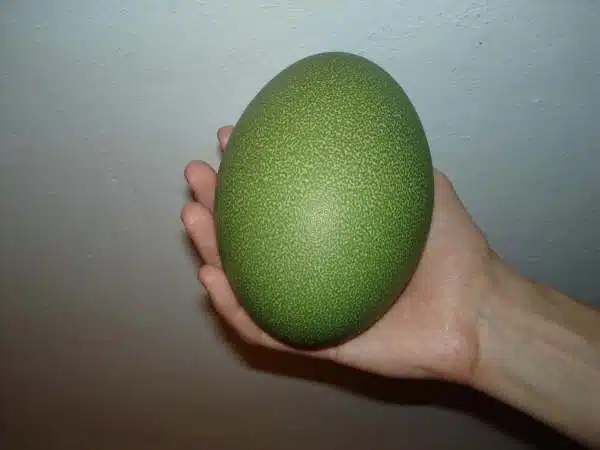
Southern Cassowary (Casuarius casuarius) eggs have a pea-green color that turns pale green within days.
The lifecycle of Southern Cassowaries is very distinct, starting with their colored eggs. These large birds often share incubation duties between males and females.
Even more, some male Southern Cassowaries take the incubation duties all to themselves and even proceed to feed and care for their young alone.
Tropical and savannah forests are the home to the species. However, it’s estimated there are only 2-3.000 birds of this species left.
Distribution – New Guinea, Aru Islands, Northern Australia
Green eggs nuance – pale green
2. Northern Cassowary

If Southern Cassowaries live in the Southern parts of New Guinea, Northern Cassowaries (Casuarius unappendiculatus) live in the Northern parts of the islands.
This species has green eggs with an interesting lifecycle in the duty of the male.
It’s the male Northern Cassowary that incubates the eggs. Males also build nests during the breeding season.
Male Northern Cassowary birds then take caring roles upon themselves. Males provide for the young and protect juveniles of the species until they can move out on their own.
It takes up to 9 months for the juvenile Northern Cassowaries to start living independently and not rely on males.
Distribution – Northern Papua New Guinea, Yapen Island
Green eggs nuance – uniform green
3. Emu
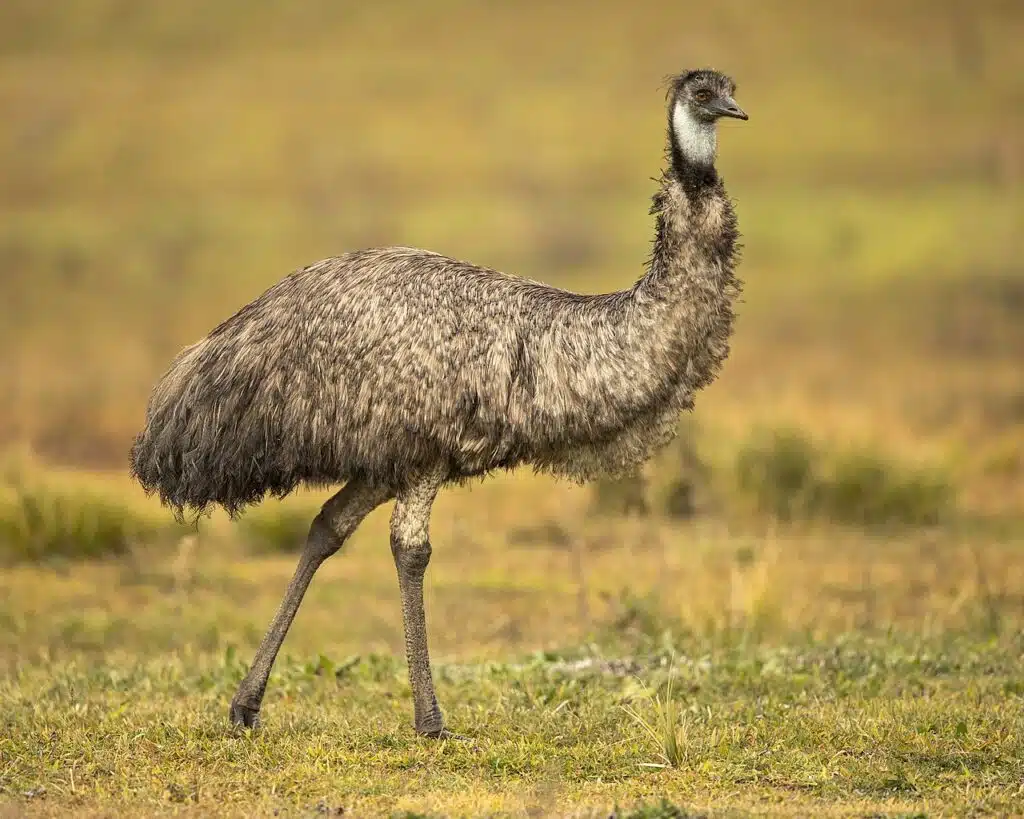
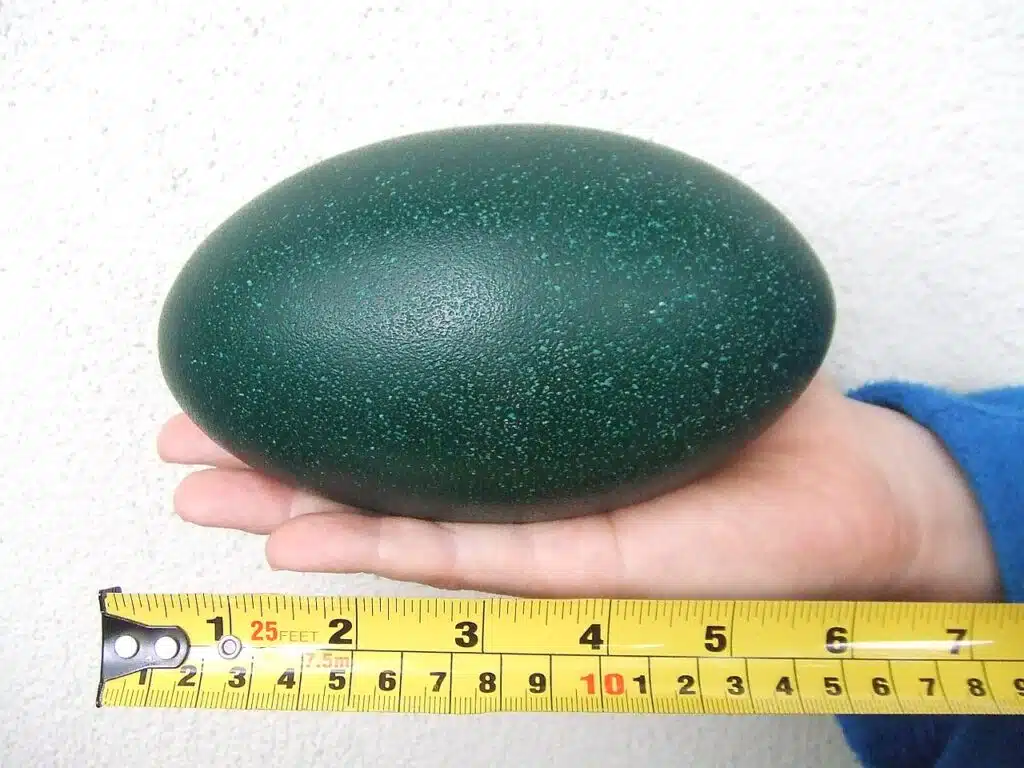
Emu (Dromaius novaehollandiae) eggs have distinct emerald dark green eggs that may reach 5-6 inches.
These eggs are laid in large numbers as a cluster may count more than 20 eggs. Females of the species can lay eggs for months when mating with males.
Emu males are responsible for the incubation period right after breeding and the laying of the eggs.
Females breed with other males once the male engages in egg incubation.
While not responsible for the incubation of these eggs, females prefer to become aggressive towards males trying to breed with other females and try to keep them incubating the eggs.
Some of the ideal places to lay eggs include sub-tropical climates and forests in savannahs but not in areas with too much vegetation.
Distribution – Australia
Green eggs nuance – dark green
4. Green Heron
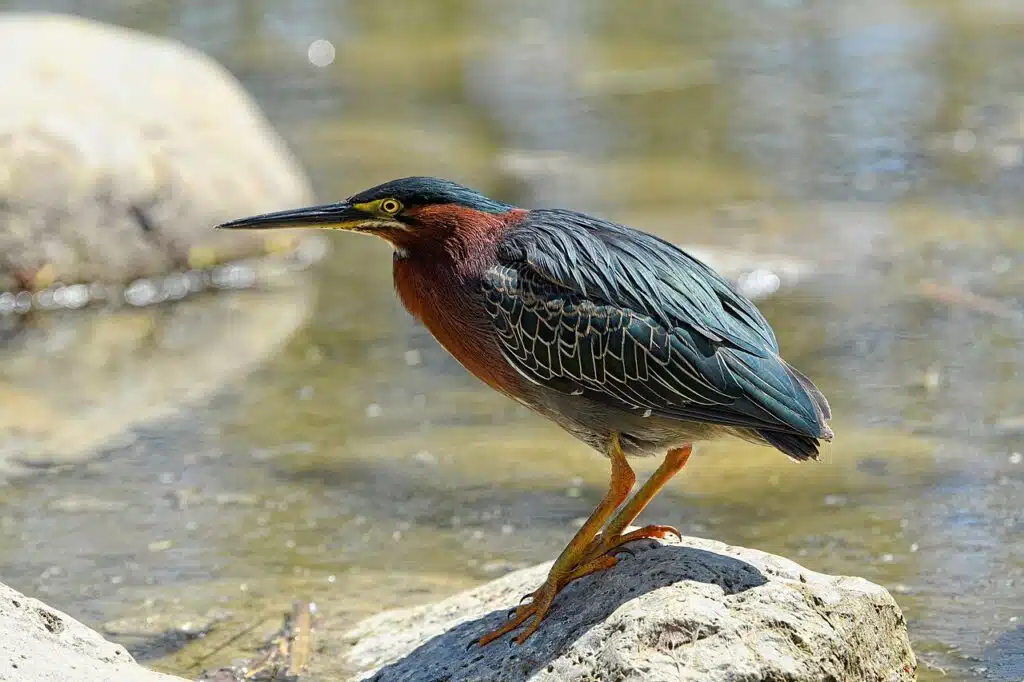
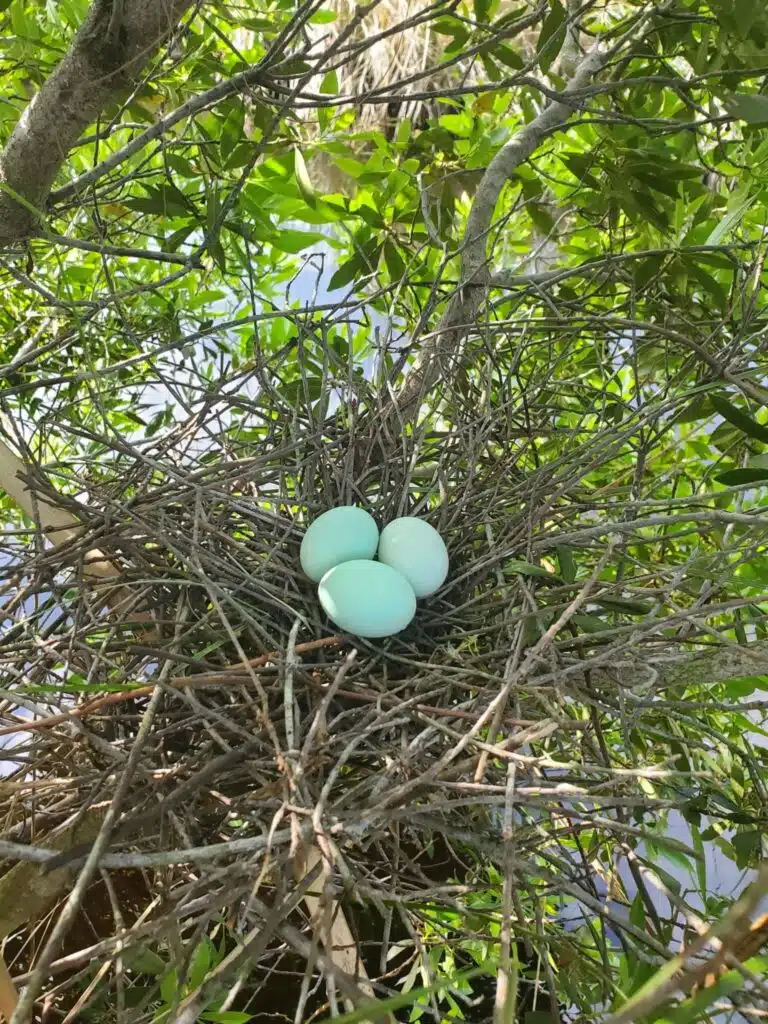
Green Herons (Butorides virescens) breed once or twice per year. The female produces a clutch of at least 2 eggs soon after.
The green eggs are laid at a difference of at least a couple of days or even one week apart.
Both males and females are involved in building the nests and incubating the eggs.
Once they hatch, the young Green Herons are then fed by both males and females for a period between 2 and 4 weeks when they are ready to leave the nest.
Birds of this species are found in a widespread habitat that expands from Canada to the outskirts of Panama.
Distribution – Canada, Eastern United States, Western United States, Mexico, Belize, Guatemala, Costa Rica, Panama
Green eggs nuance – pale green
5. Little Egret
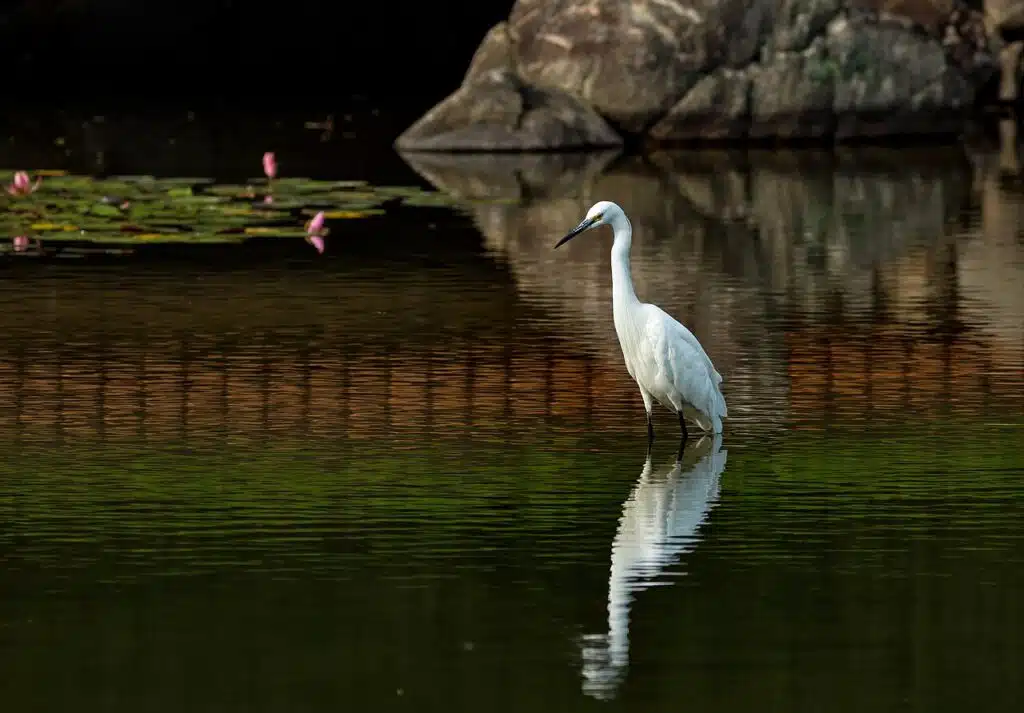
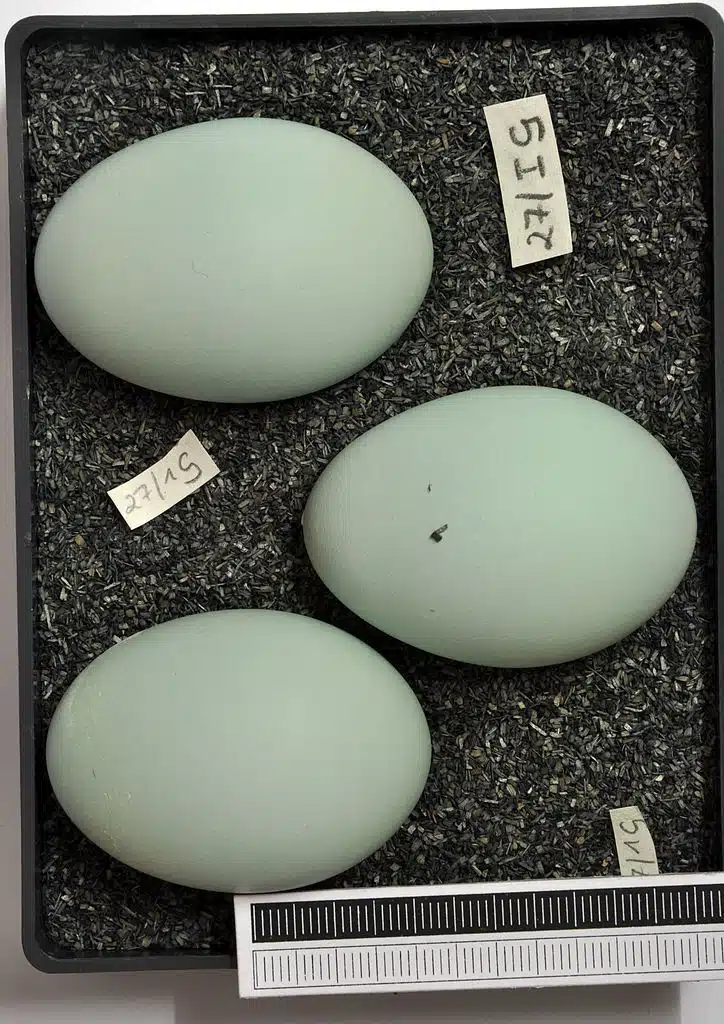
Little Egrets (Egretta garzetta) are white birds with green sections around their eyes. The species also lays pale green eggs in a small clutch of at least 2 eggs.
Birds of the species then take turns in the incubation period. Males and females keep on incubating the eggs and even care for the young together.
Male and female Little Egrets can keep on feeding the young up to the age of 6 weeks.
Most populations of the species are seen in the warmer areas of Europe as well as in Africa and Asia. It’s believed its range is expanding due to good adaptability characteristics to the species.
Distribution – Europe, sub-Saharan Africa, Southern Asia, Oceania
Green eggs nuance – blue-green
6. Purple Heron
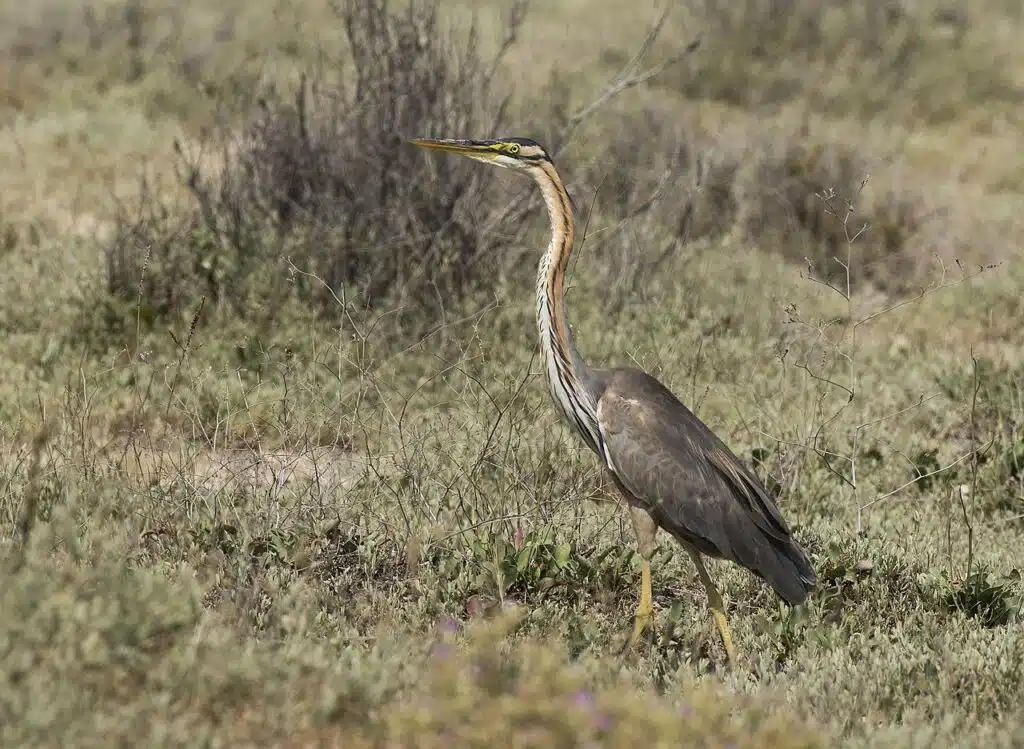
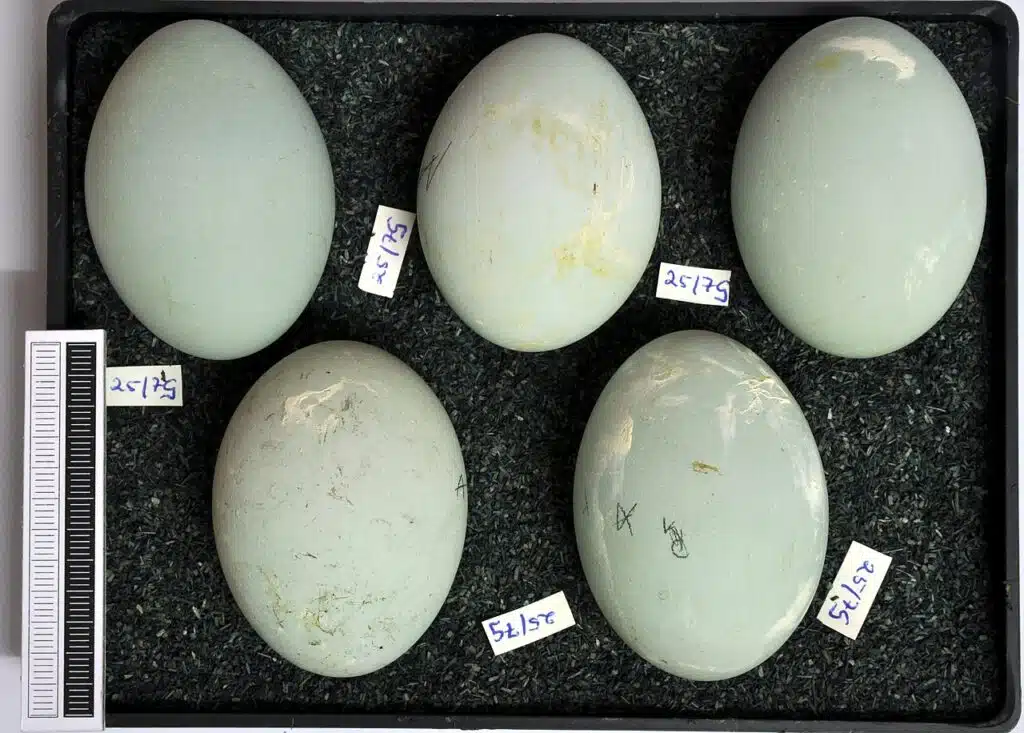
A pale green color is specific to the eggs of Purple Herons (Ardea purpurea). A typical clutch numbers at least 4 eggs.
These eggs aren’t all laid at once as they can be spread out over a few days.
Females and males may settle in the nest with the first egg, to begin the incubation period.
Once all eggs are laid, it takes only a few days for them to hatch. Soon after a few weeks, the young are ready to leave the nest.
Both male and female Purple Herons take care of the juveniles. They carry food which is often fed directly to the young.
A high worldwide population of almost half a million birds means spotting these eggs is easier than other green eggs.
Distribution – Europe, Africa, Southeast Asia
Green eggs nuance – blue-green
7. Mallard
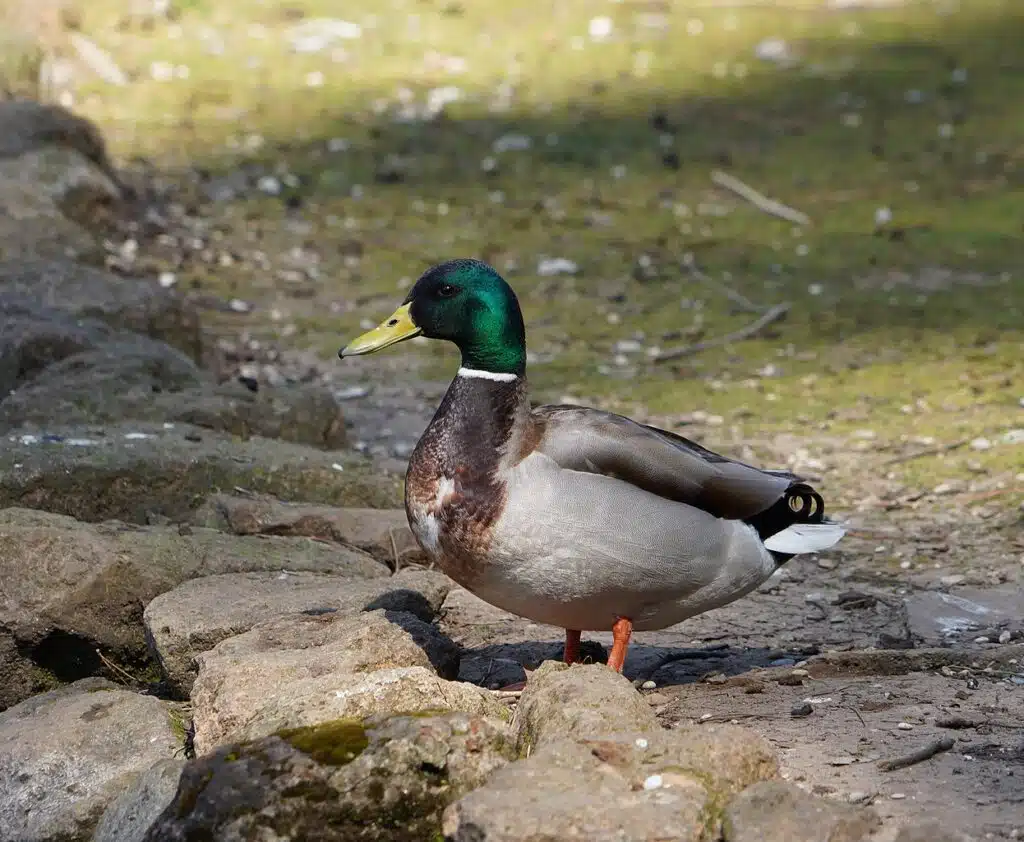
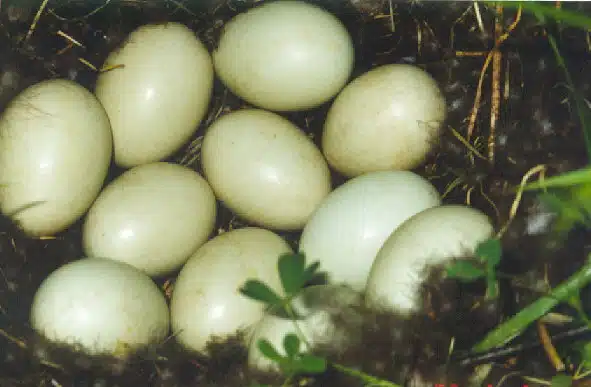
Female Mallards (Anas platyrhynchos) are responsible for building the nest. They lay a clutch of several eggs which all have a pale green nuance.
Birds of the species show a green head themselves, in the case of the males.
It takes a few weeks for the eggs to hatch, but the emerged ducklings are ready to swim from the first day.
This means females don’t have to wait in the nest for the juveniles for weeks as they can swim away.
This capacity of the juveniles is also what helps the female plan out the nest. Mallard nests are often placed on the ground and not too far away from water.
Distribution – North America, Europe, Asia, North Africa
Green eggs nuance – pale green
8. Wood Sandpiper
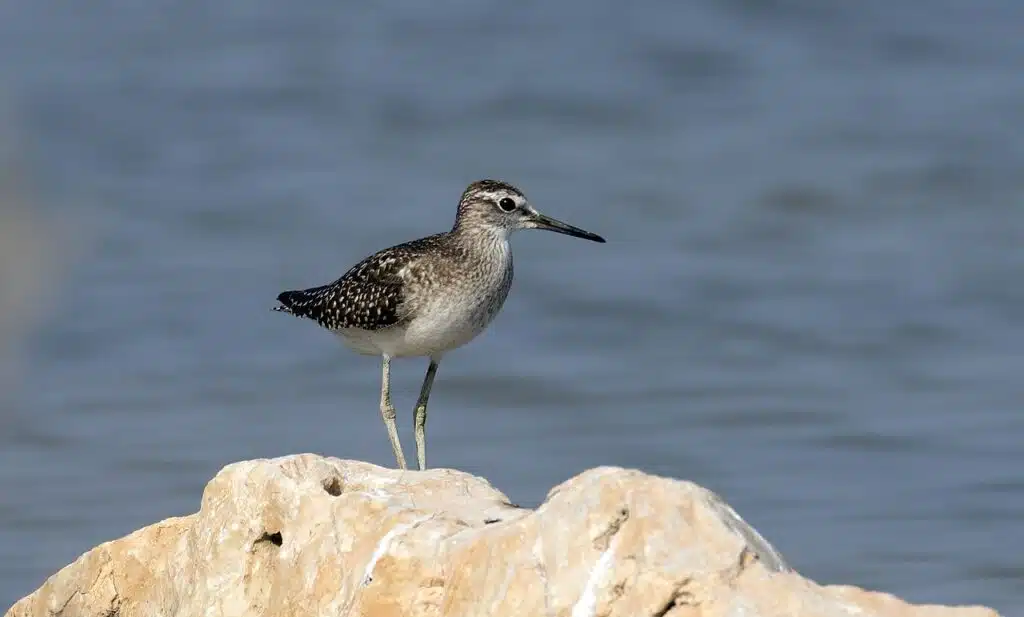
Wetlands outside The Americas are the home to The Wood Sandpiper (Tringa glareola). This species is known for its dark back with white spots and plain underside with dark spots.
Females lay pale green spotted eggs in small clutches, typically right next to wetlands.
Wetlands with various aquatic plants are favored for the nest as they offer support and cover.
A migrating species, Wood Sandpipers only lay eggs when their return from their overwintering range.
Distribution – Europe, East Africa, West Africa, South and East Asia, Australia
Green eggs nuance – pale green
9. Whimbrel
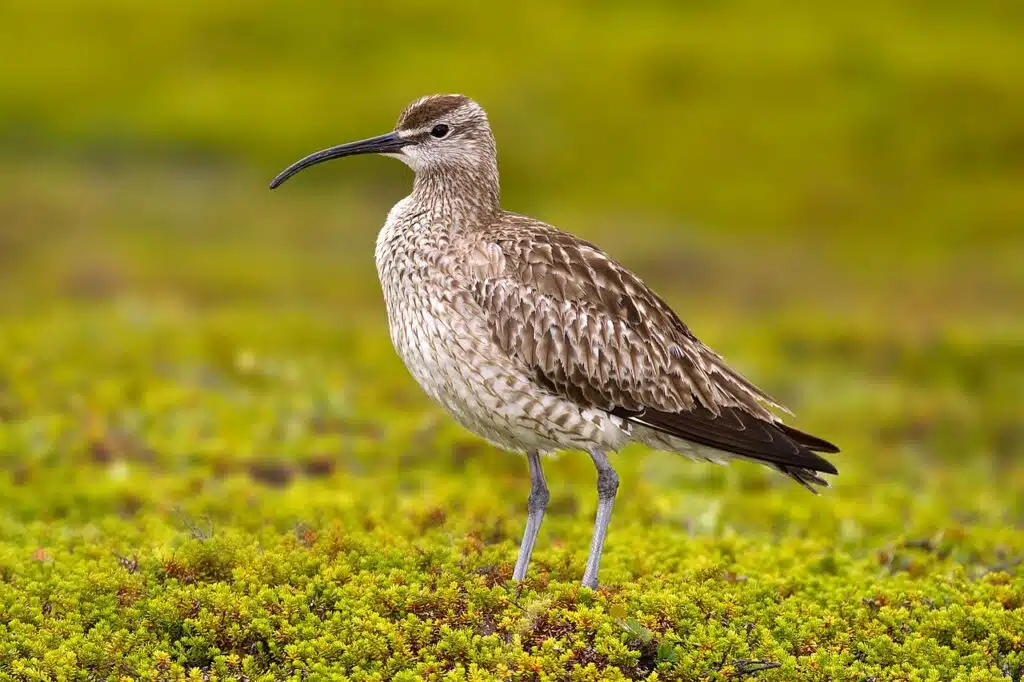
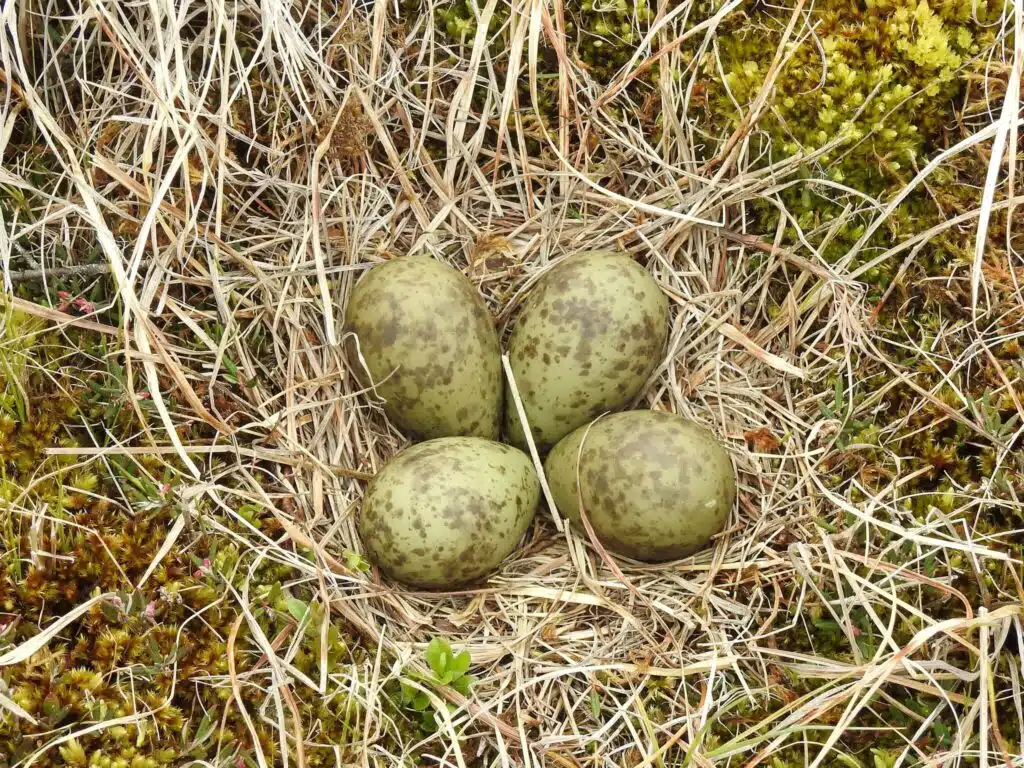
Spotted green eggs are laid by Whimbrel (Numenius phaeopus). These eggs have a pale green color with bright brown spots.
Brown marks are also specific to the adult Whimbrel’s plumage.
The species maintains its brown plumage under different nuances, together with a dark brown crest.
Female Whimbrels lay clutches of up to 5 green eggs close to water.
Whimbrels are one of the most widespread birds with green eggs. Found across North America, the species is also found in coastal areas of all other major continents.
Distribution – North America, Europe, East and West Africa, East and West South America, Southern Asia, East, and West Australia
Green eggs nuance – bright green
10. Black-tailed Godwit
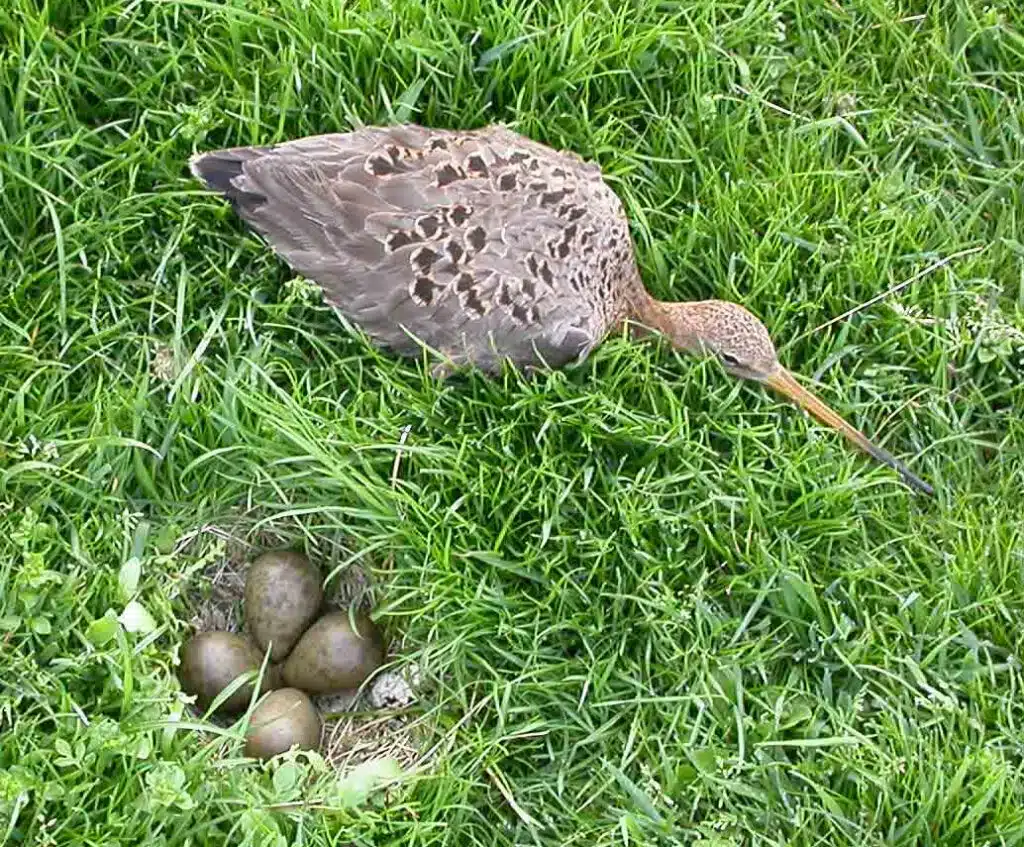
Small clusters of green to brown eggs are laid by Black-tailed Godwits (Limosa limosa). These eggs may reach a length of just over 2 inches and a diameter of 1 inch.
Black-tailed Godwits incubate the eggs together. Both males and females take a turn in the incubation period and in the care period until the young fledge.
Highly independent from an early age, juvenile Black-tailed Godwits are led away to marshes or coastal areas from their first days.
Distribution – Europe, North Africa, Central Asia, South Asia
Green eggs nuance – green, green-brown
11. Hudsonian Godwit
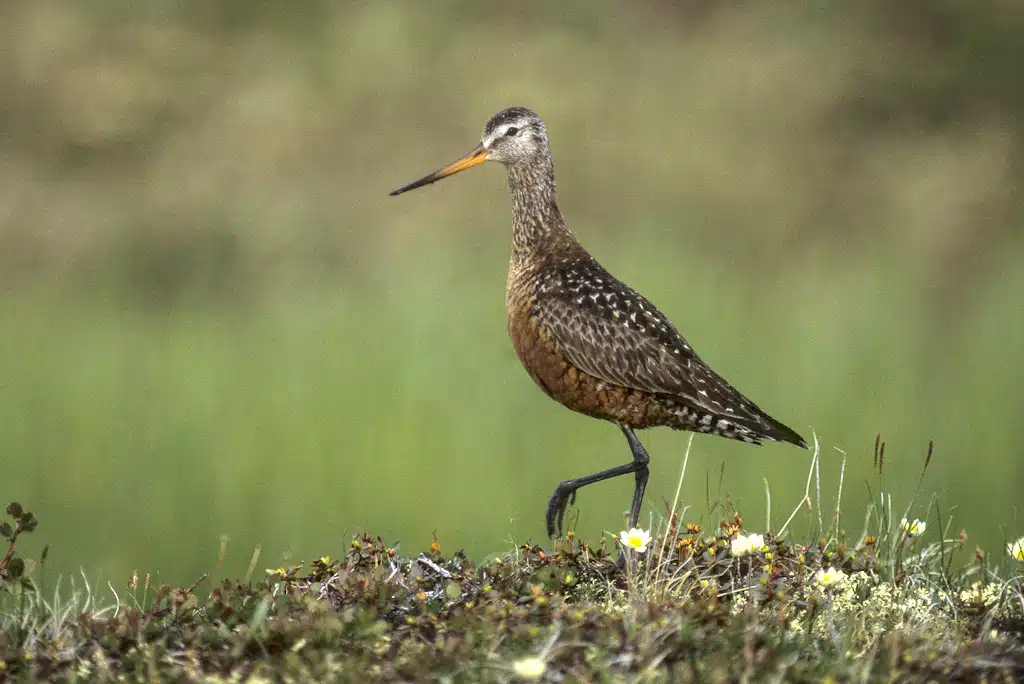
Found across The Americas, Hudsonian Godwits (Limosa haemastica) lay olive-green eggs. The color of the eggs isn’t uniform as the shell also shows dark spots.
These eggs are laid in small clusters and are incubated both by males and females.
This is a species that takes turns in incubation and also takes care of the young together.
Juvenile Hudsonian Godwits are largely independent within a month.
The migration route of Hudsonian Godwits is one of the longest in the world. Populations in the Northern parts of North America reach the Southern parts of South America.
Distribution – Northern Canada, Alaska, South America
Green eggs nuance – olive green
12. Puerto Rican Bullfinch
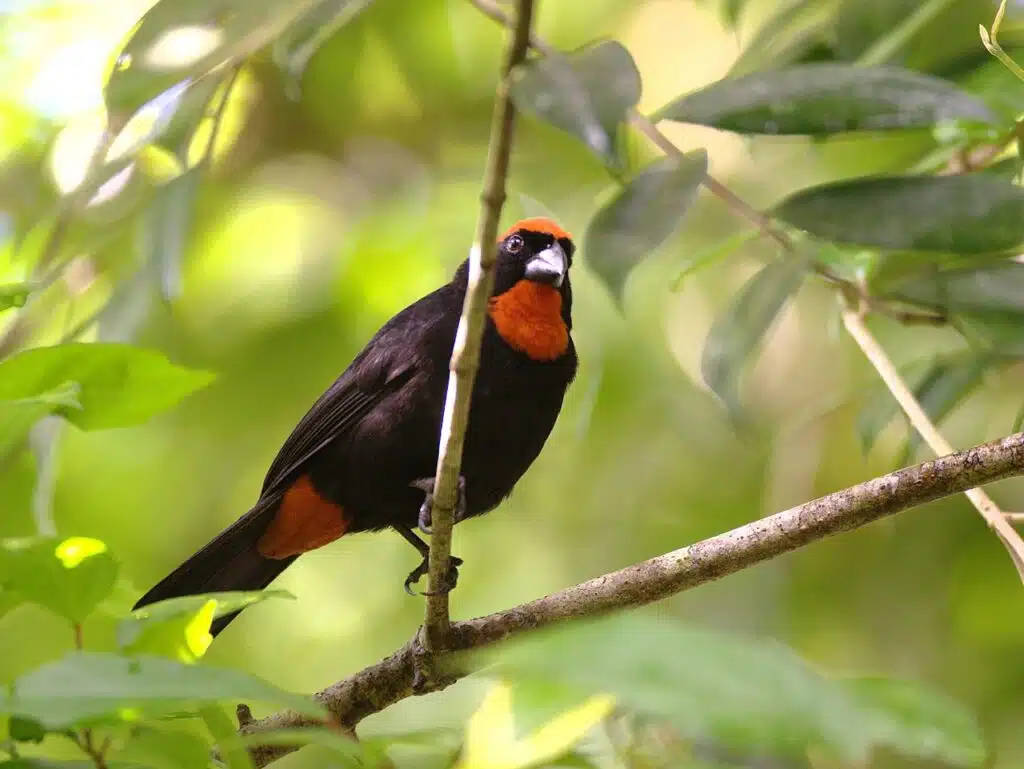
Female Puerto Rican Bullfinches (Melopyrrha portoricensis) lay light green eggs. Clutches of up to 3 eggs are characteristic of these black and orange birds.
The female is responsible for building the nest and for incubation.
Puerto Rican Bullfinch nests are known for their spherical shape and enclosed nature. Some of these tubular nests may still have a small side opening for easy access.
Emerged young are fed by the female and fledge sooner than other species of birds.
Distribution – Puerto Rico
Green eggs nuance – bright green
13. Northern Mockingbird
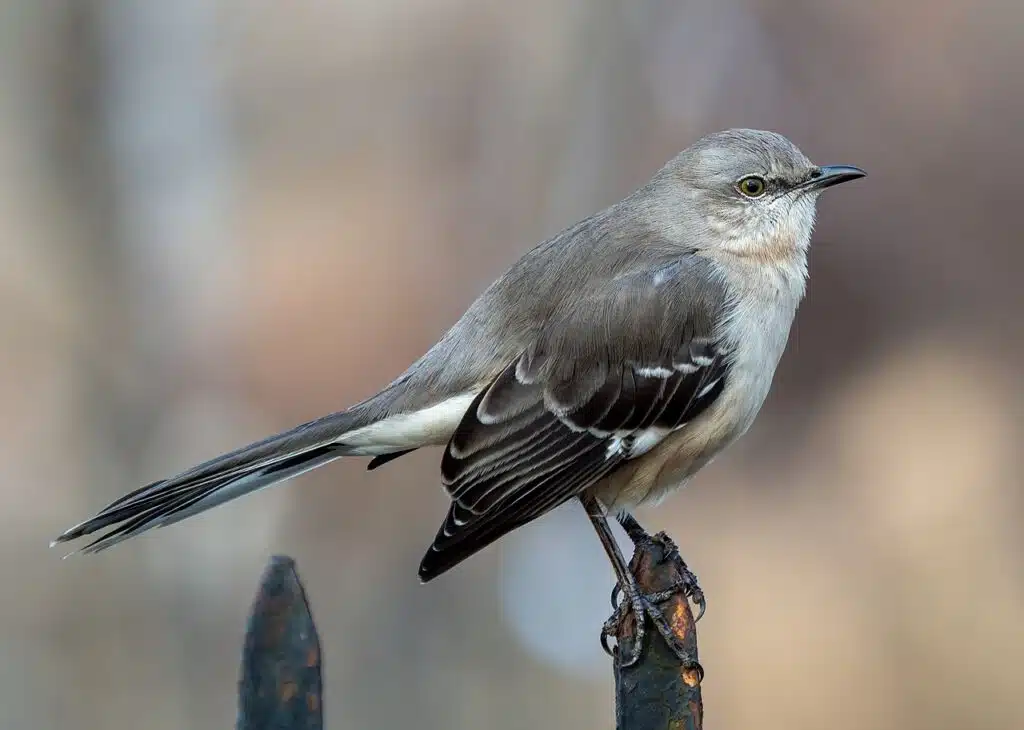
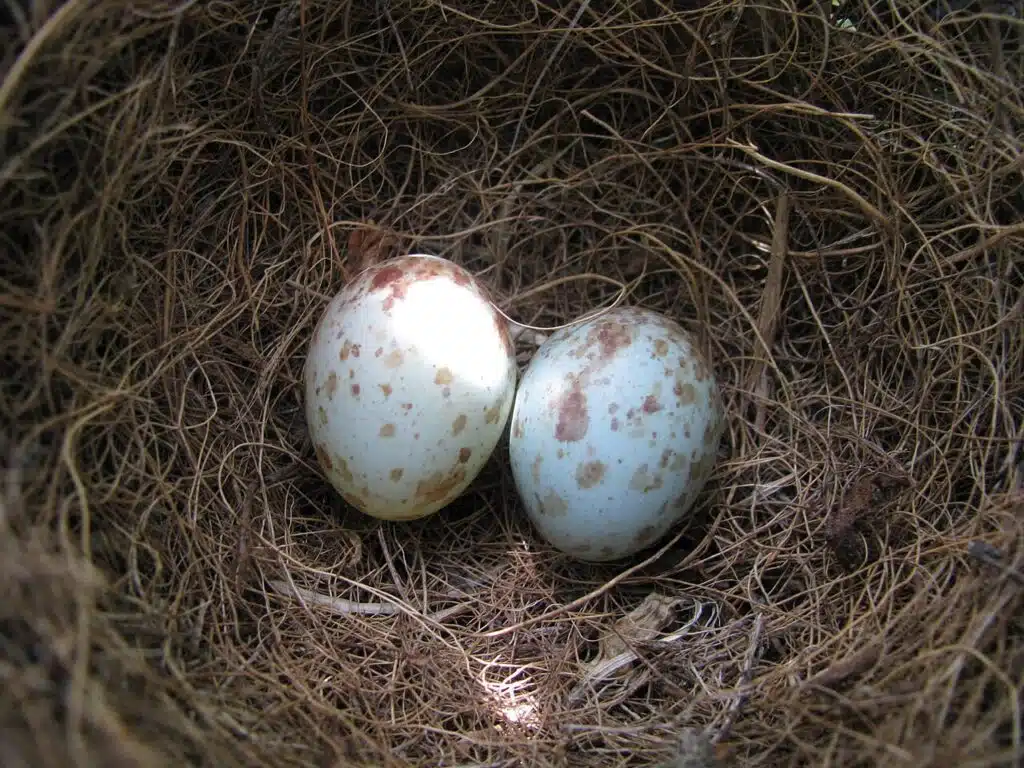
A light green color is specific to Northern Mockingbird (Mimus polyglottos) eggs, together with a light blue color.
Both variants come with dark spots and are generally incubated by females.
Once these eggs hatch, both males and females take turns in feeding the juvenile Northern Mockingbirds.
Both males and females have a similar dark gray appearance with a white underbelly.
Northern Mockingbirds are migratory. They move from Central US states to Southeastern and Southern states to overwintering.
Some of these birds also migrate further South to all regions of Central America or to Cuba.
Birds only return to the Central US states in their breeding range.
Distribution – United States, Mexico, The Caribbean
Green eggs nuance – bright green
14. Chicken
Chicken eggs come in all types of nuances, including green. Various species of chicken only make green eggs.
- Araucana
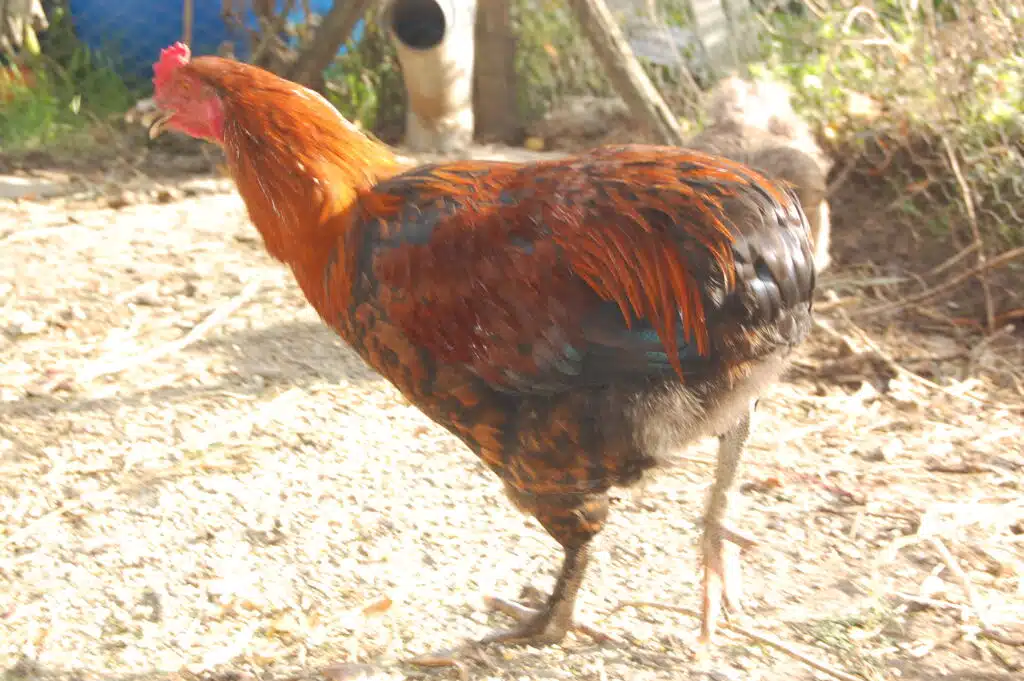
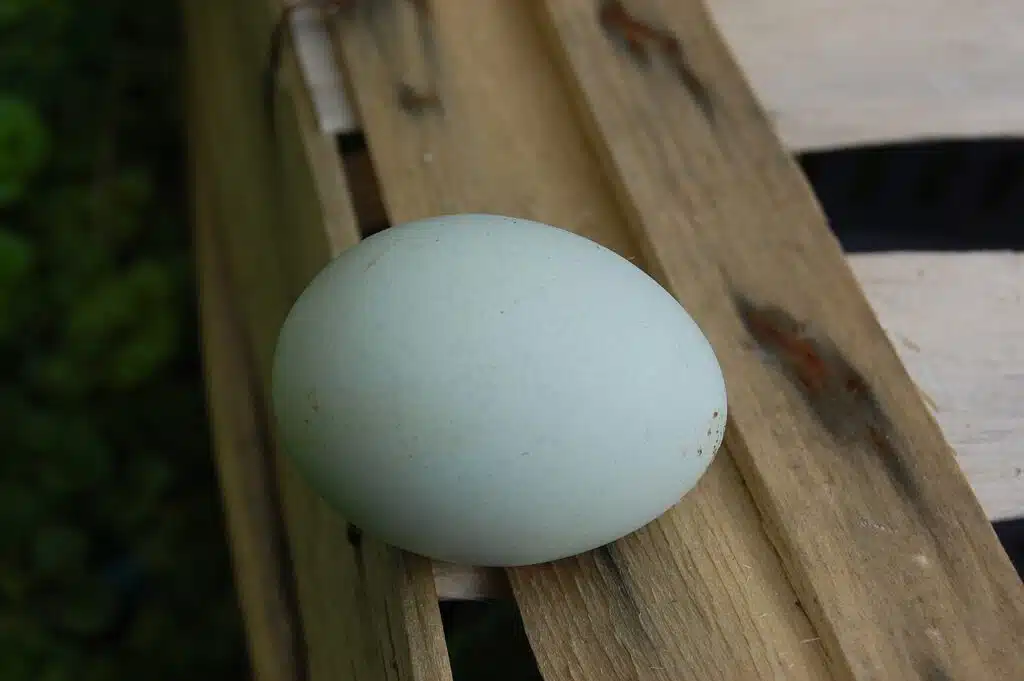
This species lays both green and blue eggs. Their nuance is bright and typically uniform.
Known for their large ear tufts, these chickens are seen in captivity around the world. Multiple variants of the chicken are accepted in The United Kingdom.
A South American origin species, these chickens are now widespread both in Europe and North America.
Distribution – South America, United Kingdom, Spain, Australia, North America
Green eggs nuance – olive green
- Isbar
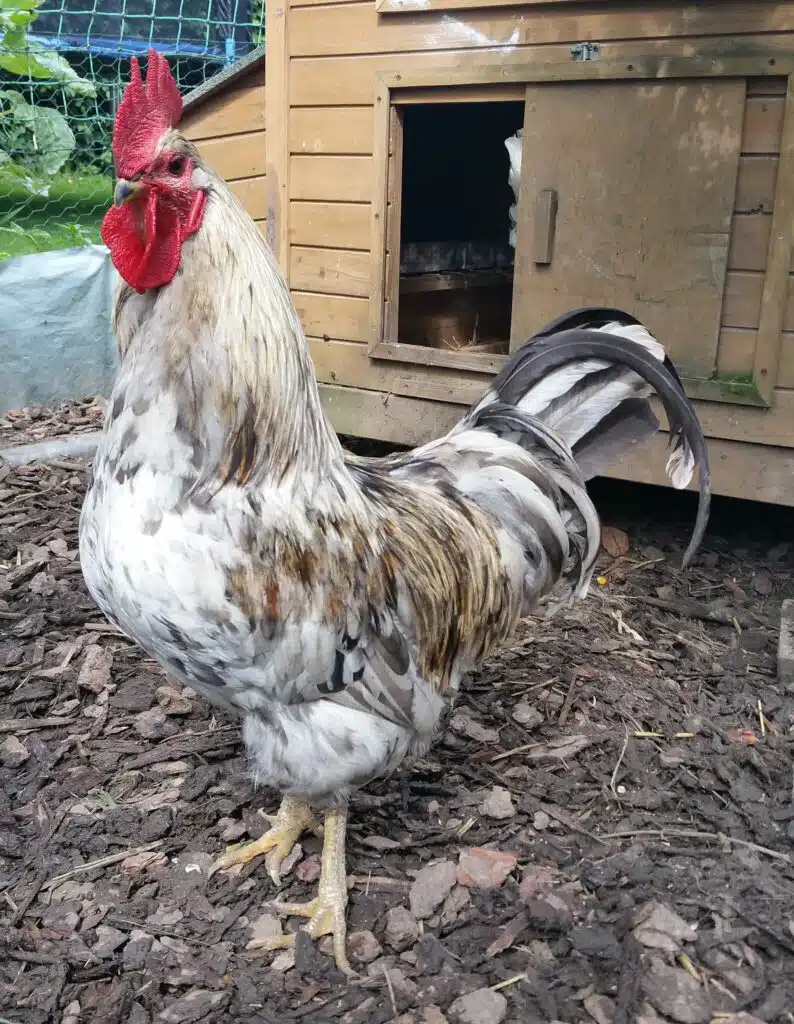
Isbars are types of worldwide chicken that lay olive-blue eggs. These types of chicken come in different colors themselves.
There are black Isbars as well as later hybrids such as lavender Isbars.
Distribution – North America, Europe
Green eggs nuance – olive green-blue
15. Rufous-tailed Plantcutter
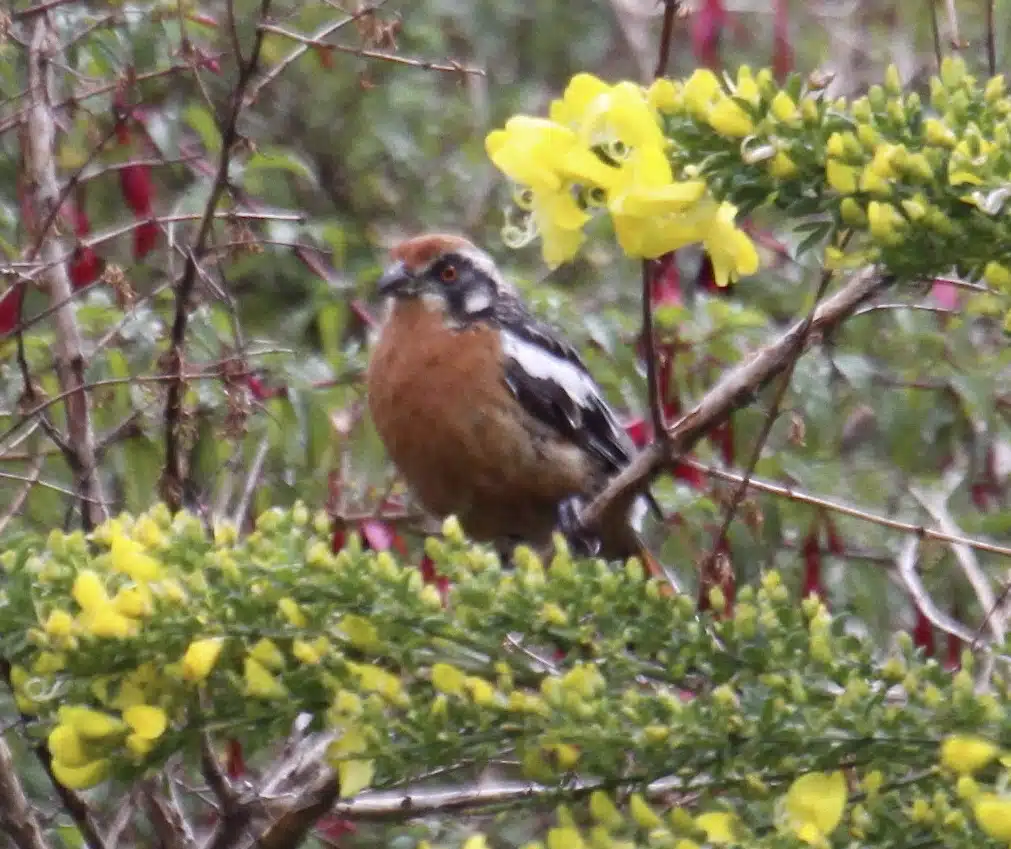
A clutch of up to 4 green-blue eggs is laid by Rufuous-tailed Plantcutters (Phytotoma rara).
A common presence in Southeastern parts of South America, The Rufous-tailed Plantcutters are known for their chestnut-red color.
Females with a dull crown compared to males lay 2 to 4 eggs in shrubs or trees.
Many of these nests may be destroyed by locals as Rufous-tailed Plantcutters may be seen as pests.
They can invade crops and farmland where they feed on the leaves of various plants as well as on fruit.
One of the main reasons The Rufous-tailed Plantcutter is seen as a pest is its capacity to eat fresh leaves.
Distribution – Chile, Argentina
Green eggs nuance – green-blue
16. Black-tailed Nativehen
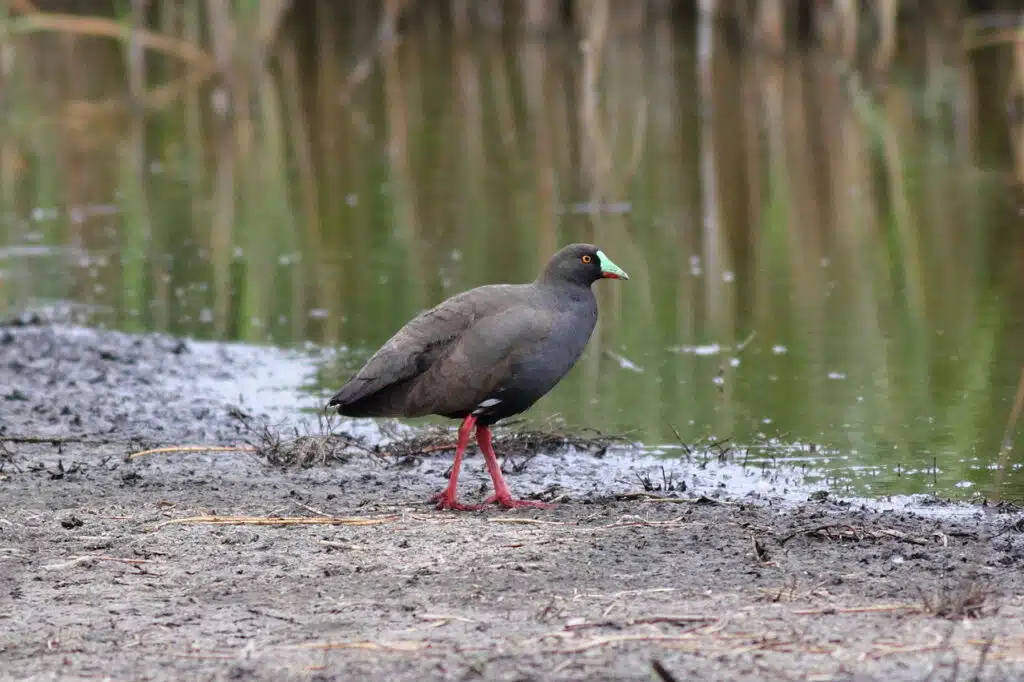
A larger clutch of up to 7 pale green eggs is specific to The Black-tailed Nativehen (Tribonyx ventralis).
This species is also a pest and its nests with green eggs are often destroyed. They invade crops, especially new crops in emergent stages.
An Australian native, this species has a black head, neck, and upward-facing tail with contrasting brown-gray wings.
These birds are often seen on the ground in large numbers, which further enhances their negative impact on crops and gardens.
Birds of this species are also known for running at high speed, which makes them difficult to catch.
Distribution – Western Australia, Eastern, and Southeastern Australia
Green eggs nuance – bright green
17. Scaly Thrush
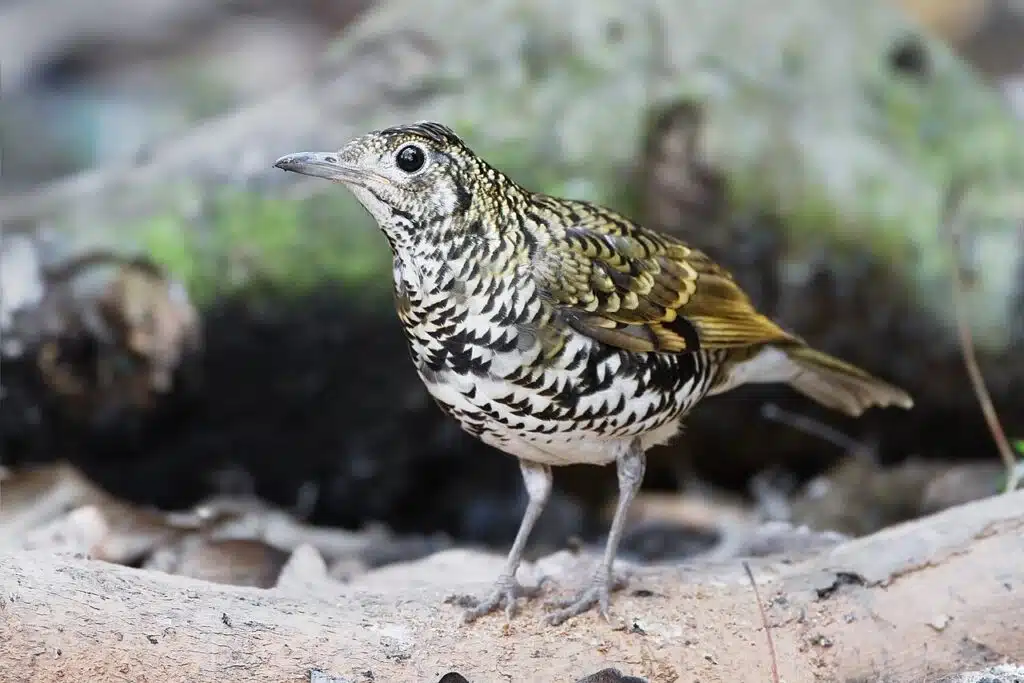
Up to 4 eggs of a pale green color are laid by Scaly Thrush (Zoothera dauma). These small birds may also lay up to 7 eggs on occasion.
They build elaborate cup-liken nests for the emerging birds which are fed different types of small insects.
Scaly Thrushes always build their nests up on trees.
It’s here their natural coloring helps them camouflage themselves while incubating.
Yellow upper plumage with black specks and additional black specks on the white underbelly of the species makes this species blend in.
Found at various altitudes, Scaly Thrushes are seen even in coniferous woodlands.
Distribution – pale green
Green eggs nuance – East Asia, Southeast Asia
18. Fairy Warbler
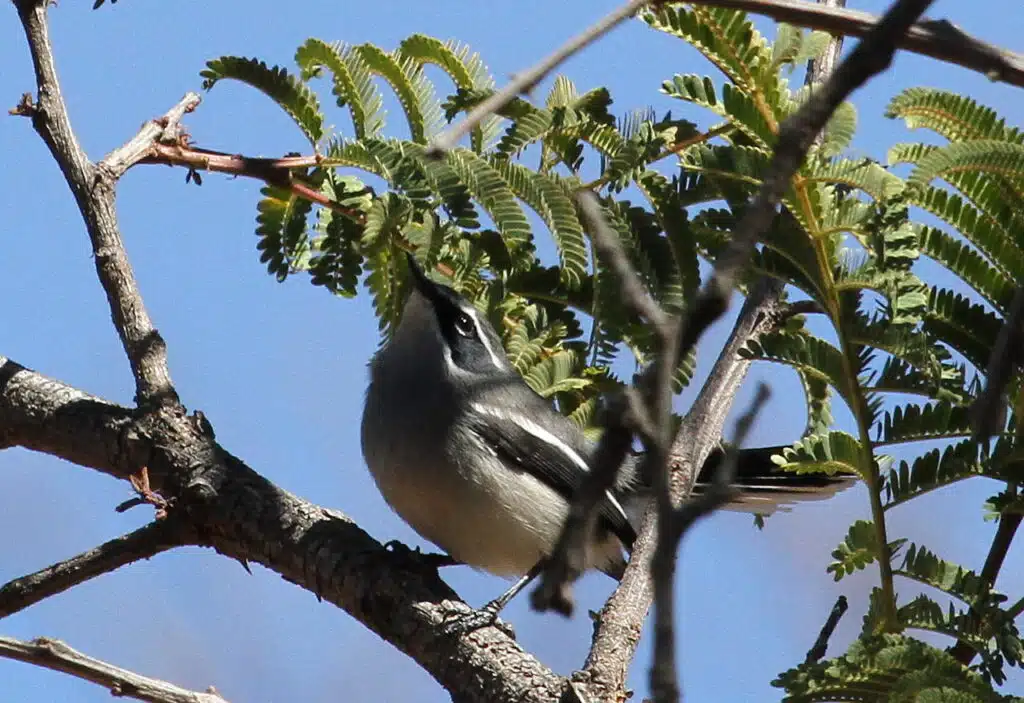
Green eggs are laid by the female Fairy Warbler (Stenostira scita) in small clusters. Up to 4 eggs are laid by the female in cup-like nests.
Found in the Southern parts of Africa, this species moves away from the coast to overwinter.
Males and females have a similar appearance but only the females build the nests using plant fiber.
A gray back and crest are specific to these birds. They show additional white and black sections across the head and the tail.
Brown wing margins and a white underbelly is seen on females.
Distribution – South Africa, Namibia, Botswana, Zimbabwe
Green eggs nuance – bright green
19. Karoo Chat
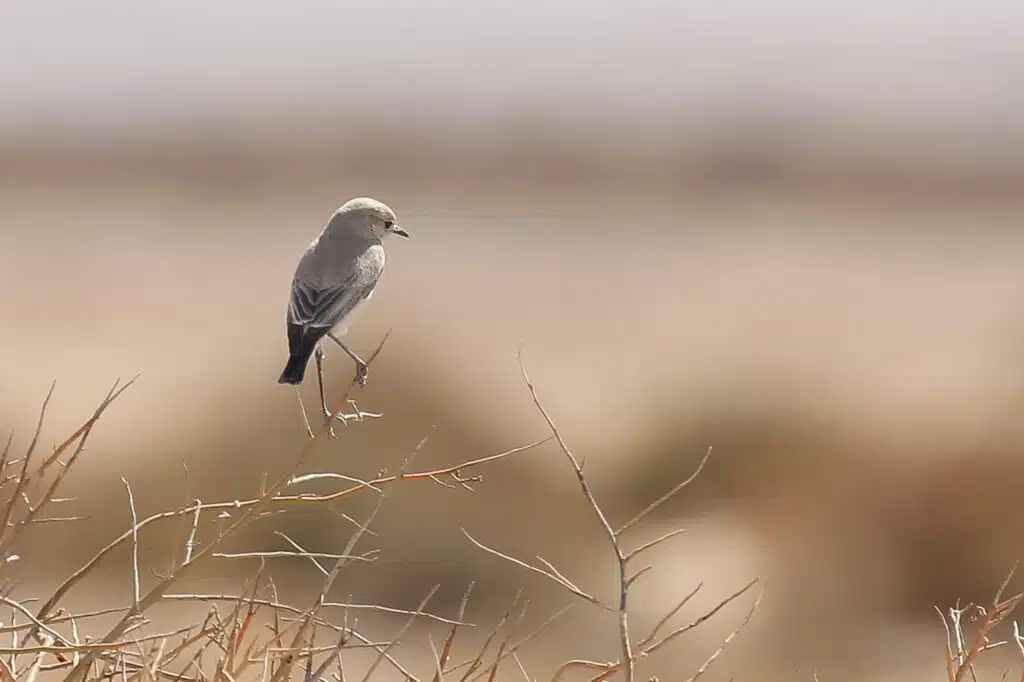
Green eggs are characteristic of the clutch of The Karoo Chat (Emarginata schlegelii). This is a small clutch of 2-4 eggs which may be laid in various nests.
These nests can be seen up on small trees, shrubs, or even laid directly on the ground.
Birds of this species show very specific breeding habits such as monogamy. They only breed with a single mating partner in their entire lives.
Male and female Karoo Chats may also work together in provisioning for the emerged juveniles.
All types of small insects are provisioned to emerging birds. Karoo Chats may be seen as both detrimental and beneficial to the ecosystem.
While they catch wasps in flight, they also kill bees and other important pollinators.
Distribution – South Africa, Namibia, Angola
Green eggs nuance – bright green
20. Dwarf Cassowary
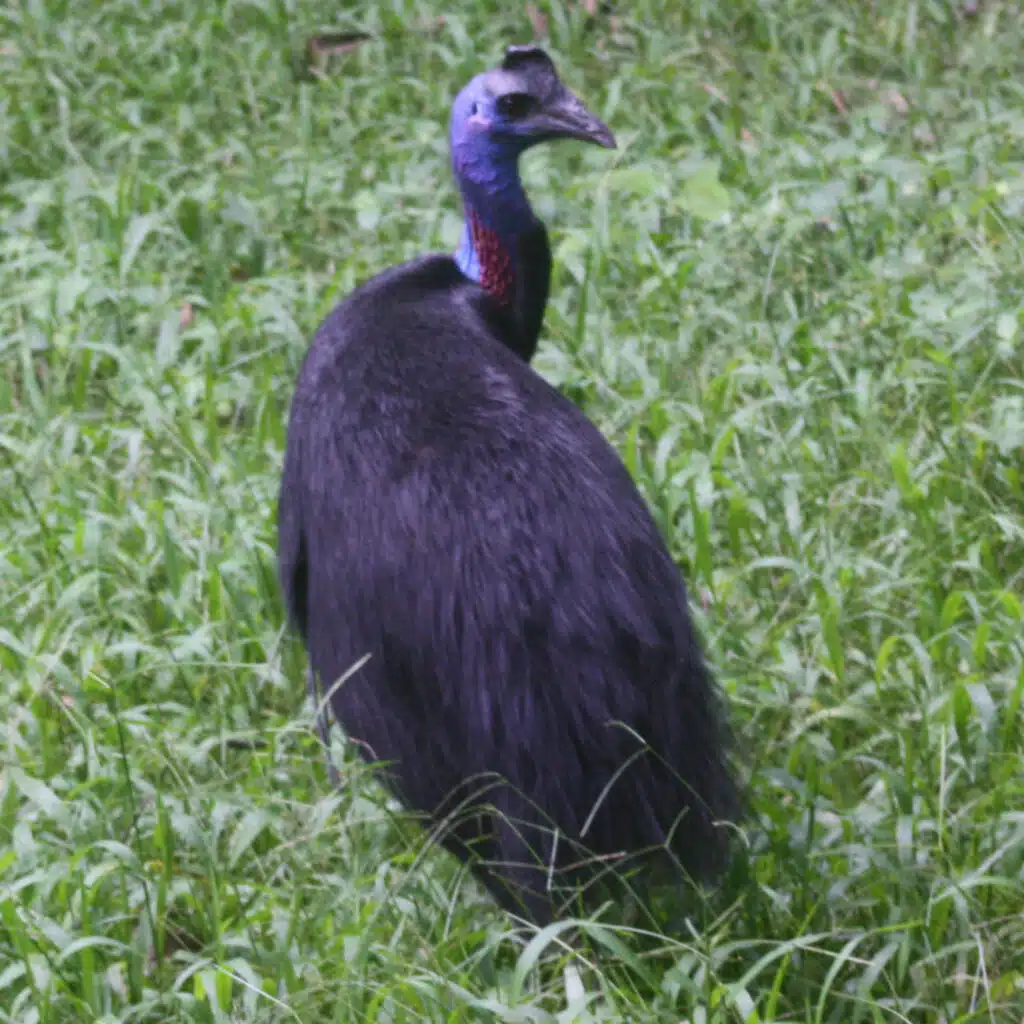
Cassowary birds are native to regions of Papua New Guinea. Some share their habitats while others are only seen in specific areas of the country.
Dwarf Cassowaries (Casuarius bennetti) are part of this group of birds with the distinct capacity to lay green eggs.
Measuring a few inches, these eggs are dark green and similar to the nuance of the eggs of other cassowaries.
The breeding season of the species shows specific breeding rituals.
Both males and females look for a good nesting site and even the male gets involved in the incubation of the eggs.
Before breeding, males try to impress females by dancing around them.
Females may accept or reject males. A female Dwarf Cassowary that accepts males typically bends in approval.
Males mate with one female while females mate with multiple partners each year and lay eggs after breeding.
Distribution – Papua New Guinea
Green eggs nuance – dark green